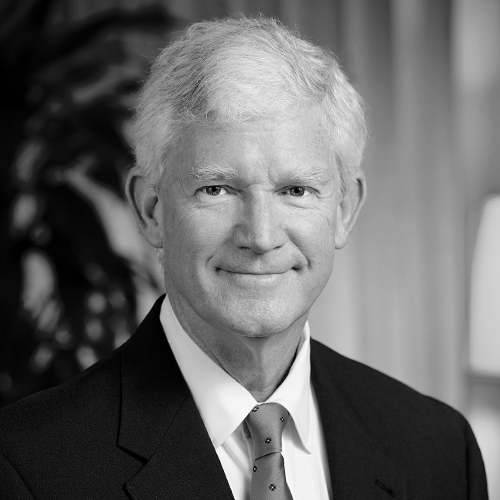The shift America’s health-care industry has undergone in the last decade is unprecedented. A sharper focus on cost control is accompanied by a push to boost quality—with financial penalties and incentives attached.
But one subset of medicine, dental care, has lagged behind in this effort. Benevis, a practice services company for dentists, is working to introduce dentistry to technology solutions in addition to providing business advice. The company helps dentists evolve their practices into more cost-effective enterprises while also boosting quality of care.
Benevis’s senior vice president and general counsel, Jerry Perchik, and his small legal team are indispensable in this transformation. With the legal department’s help, Benevis is making dental care available to under-served people.
Working with Benevis frees dental practices from having to attend to many administrative functions. Benevis’s employees, supported by software systems tailored to the dental profession, can perform this work at lower costs than practices could do for themselves. Benevis’ 400+ employees serve 135 dental offices in seventeen states and the District of Columbia.
“The efficiency allows us to operate in the Medicaid arena where many others can’t or choose not to,” Perchik explains. This is key to the company’s goal of bringing dental care to under-served populations. “Dental care for children has been shown to improve overall health-care outcomes,” Perchik points out. Through Benevis, dental practices can provide health care to thousands of children—a source of pride for Perchik.
Benevis’s client, Kool Smiles, is the largest Medicaid dental provider in the country. Kool Smiles primarily serves children who live in economically disadvantaged areas. Benevis’s nonclinical support services enable Kool Smiles and many of its affiliated dental practices to serve this population while maintaining profitability—even when Medicaid, which pays lower rates than private insurance firms, is the primary insurance provider.
Benevis measures how efficiently dentists treat patients by providing dentists with operating and quality metrics, allowing clinic leaders to compare how dentists perform in comparison to their peers. At first glance, metrics like how much time dentists spend performing particular procedures may seem antithetical to improving quality, but that’s not the case, Perchik emphasizes.
“We believe it’s just the opposite,” he says. “Clinical leaders can learn what the appropriate length of care is for different procedures. For example, certain procedures should take a dentist longer than others. If this isn’t the case, it gives senior dentists an opportunity to discuss treatment with that dentist.
“Operating metrics can never be evaluated in isolation,” he adds. Benevis’s team provides data to medical professionals who review patient charts and other quality-of-care indicators to ensure compliance and provide this information to dental directors in each region, who then use them to evaluate the quality of care being provided to Kool Smiles patients. “The rich data sets we compile help our dentist clients assess and evaluate clinical outcomes,” Perchik says.
“The patient is going to be the winner, with more access to better care.”
The legal team supports the company’s mission by ensuring regulatory compliance, which is complex and variable because it is determined at the state level. These statutes influence how Benevis’ management agreements with clients are structured.
There is no one-size-fits-all contract that applies to all business agreements. Perchik, as the sole staff lawyer, relies on outside counsel in each state to provide guidance on how to structure agreements while staying compliant.
Some contractual principles are universal. For example, a licensed dentist must be listed as the clinic owner and must be in charge of all clinical decisions. Benevis can provide data to help clinicians assess quality of care, but it does not dictate clinical practices or decisions.
The contractual language delineating the balance between practice management counsel and mandates on standards pertaining to quality of care is a delicate one, Perchik says, with variability according to state laws.
“The challenge is to operate our service organization in a way that allows us to provide this type of administrative support within each state’s laws,” Perchik says. As the pay-for-service model moves toward the pay-for-quality concept, regulations are changing. Perchik, his team of three paralegals, and outside counsel advisors must keep up and assess how legislative changes affect the company’s mission to offer care to more people.
The future will hold dramatic changes in the business of dentistry. “As the payment model evolves, there will be changes in payment agreements between payers and providers,” Perchik says.
Perchik envisions more general dentistry practices combining with specialists, such as oral surgery and orthodontics, to provide all-in-one service entities.
Benevis will offer legal counsel for these transactions and draft contractual arrangements. For instance, an alliance of practitioners could be structured so one physician owns the practice and contracts with other providers; or there could be an arrangement in which a physician joining a larger practice has a small ownership stake that grows in time.
All of these industry changes will mean more work for the legal department and likely lead to staffing growth in Perchik’s department.
The momentum for industry restructuring is on the rise. “There is a lot of capital being attracted to the medical and dental space,” Perchik says. “The patient is going to be the winner, with more access to better care.
“I feel fortunate to be in the health-care sector because it puts you in the epicenter of a lot of things that are happening socially, economically, and politically,” he adds. “It’s an exciting time to be in this space.”


